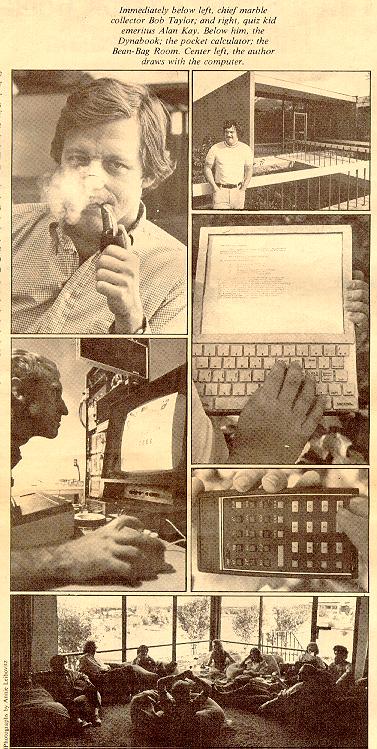When did you Hear of the Internet?

Think
back. When was the first time that you read about the
“Internet”? My guess is that you read about it around 1995, a
year or so before Netscape went public and started the dot com bubble.
However,
if you’re an avid Rolling Stone reader, you may have actually read
about it in 1972. Their December 7, 1972 issue featured a fascinating article by Stewart Brand (yes, him of the Whole Earth Catalogue) on a game called Spacewar and this led into a description of Xerox PARC, the early Internet and where computing might go. Incidentally, the photos in the article were by Annie Liebowitz (in her pre-celebrity days).
The
article starts by talking about how Spacewar is avidly played by
hackers across the country after they finish their day’s work.
What’s interesting is that no one is older than 35 (in fact the field
is so young that you can learn everything about it in a year) and that
institutes report that the quality of their research goes down when
they ban Spacewar. Moreover, it turns out that Spacewar is
actually turning the hackers into better programmers as they’re forced
to come up with new approaches to improve the software.
Spacewar
is really just an excuse for Brand to explore what’s going on in
computing and tie it into his interest in futurism. One of the
most interesting parts is when he discusses the ARPANET-the
pre-cursor to our Internet. While there’s almost nothing on the
network at the time of the article, he’s smart enough to see how it’s
going to play out:
At
present some 20 major computer centers are linked on the two-year-old
ARPA Net. Traffic on the Net has been very slow, due to delays and
difficulties of translation between different computers and divergent
projects. Use has recently begun to increase as researchers travel from
center to center and want to keep in touch with home base, and as more
tantalizing, sharable resources come available. How Net usage will
evolve is uncertain. There's a curious mix of theoretical fascination
and operational resistance around the scheme. The resistance may have
something to do with reluctances about equipping a future Big Brother
and his Central Computer. The fascination resides in the thorough
rightness of computers as communications instruments, which implies
some revolutions.
One
popular new feature on the Net is AI's Associated Press service. From
anywhere on the Net you can log in and get the news that's coming live
over the wire or ask for all the items on a particular subject that
have come in during the last 24 hours. Plus a fortune cookie. Project
that to household terminals, and so much for newspapers (in present
form).
Since
huge quantities of information can be computer-digitalized and
transmitted, music researchers could, for example, swap records over
the Net with "essentially perfect fidelity." So much for record stores
(in present form).
Brand
also recognizes that there’s something special going on at Xerox’s
PARC. It was then beginning it’s heyday; a lot of it’s inventions ended up in the original Mac. Take a look at this photo that shows what was being worked on-and remember that this is 1972:

That’s
an early portable computer on the upper right and one of the original
mice on the middle left. Too bad that most of this would languish
in labs for another 10-15 years. Read this particularly salient
passage (and remember that tablet PCs are only just taking off and it’s
only this year that the One Laptop Per Child project will actually get going):
The
drawing capability is a program that Kay designed called "Paintbrush."
Working with a stylus on the display screen, you reach up and select a
shape of brush, then move the brush over and pick up a shade of
half-tone-screen you like, then paint with it. If you make a mistake,
paint it out with "white." The screen simultaneously displays the image
you're working on and a one-third reduction of it, where the dot
pattern becomes a shaded half-tone.
A
Dynabook could link up with other Dynabooks, with library facilities,
with the telephone, and it could go and hide where a child hides. Alan
is determined to keep the cost below $500 so that school systems could
provide Dynabooks free out of their textbook budgets. If Xerox
Corporation decides to go with the concept, the Dynabooks could be
available in two or three years, but that's up to Product Development,
not Alan or the Research Center. Peter Deutsch comments: "Processors
and memories are getting smaller and cheaper. Five years ago the idea
of the Dynabook would have been a absolutely ridiculous. Now it merely
seems difficult....
Incidentally, if you’re wondering where I’m finding this stuff, I’m hearing about it from listening to a podcast of one of UC’s Berkeley’s computing classes. Fall 2006 was the first time this class-The History of Information-was ever offered and I’m hooked.
Wednesday, March 28, 2007